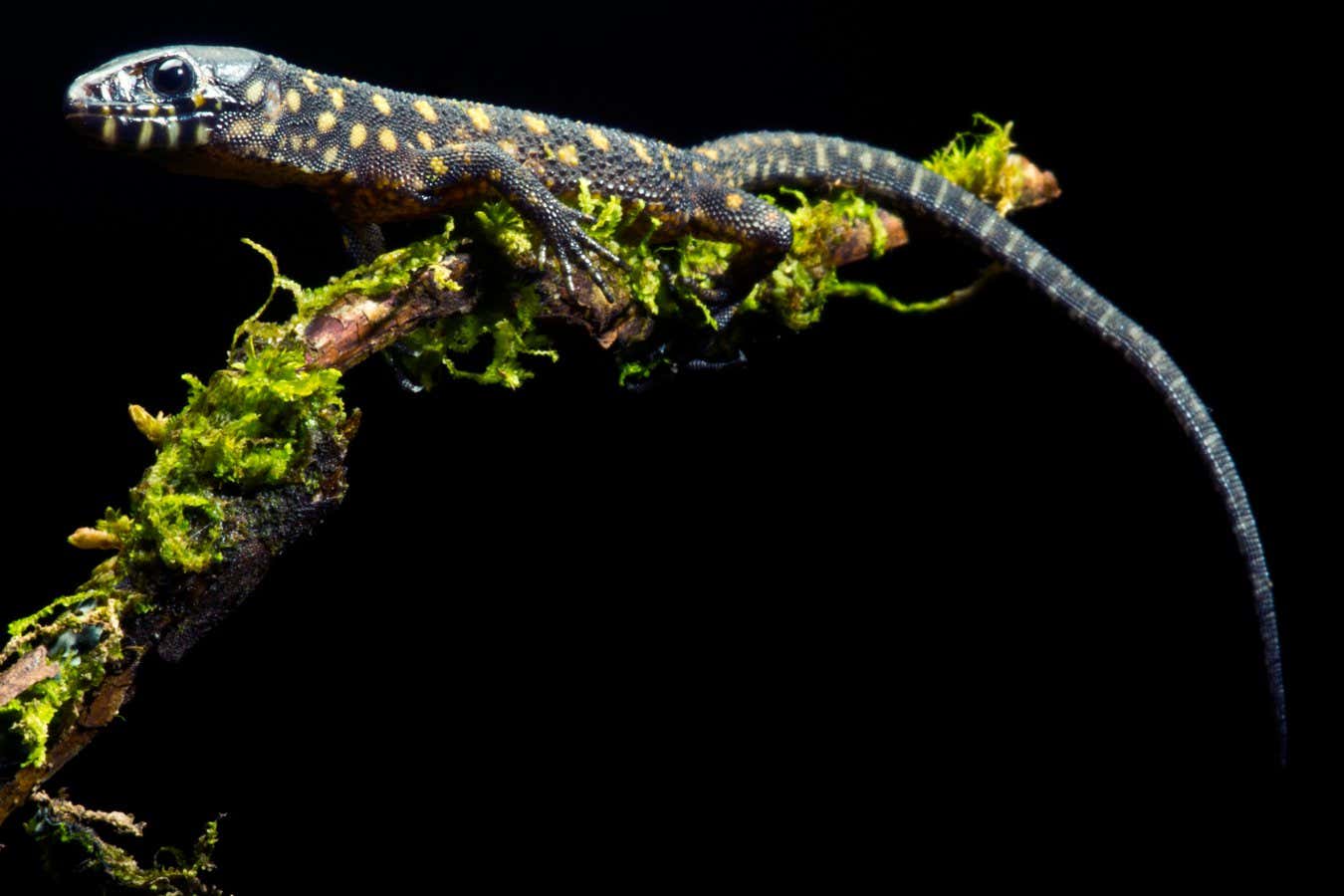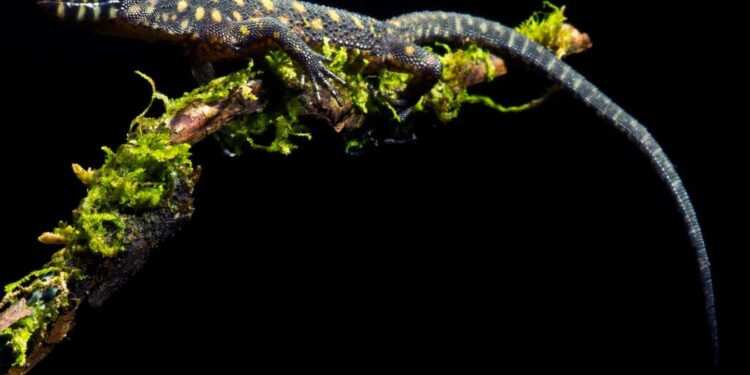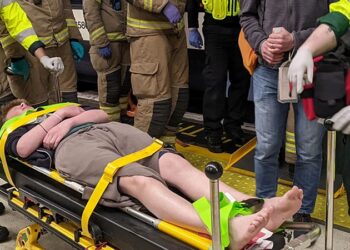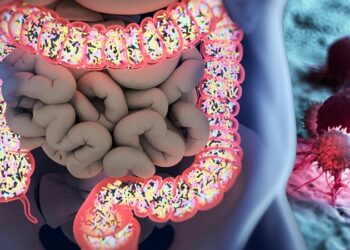
A yellow-spotted tropical night lizard (Lepidophyma flavimaculatum)
Dante Fenolio/SCIENCE PHOTO LIBRARY
A small, secretive group of lizards that still exists today may have been the only terrestrial vertebrates that survived in the vicinity of the Chicxulub asteroid collision, which led to the extinction of the non-avian dinosaurs.
It has long been known that xantusiid night lizards are an ancient lineage that have persisted for tens of millions of years. But Chase Brownstein at Yale University and his colleagues suspected that the group may have actually arisen earlier than previously thought: in the Cretaceous Period, which ended around 66 million years ago.
The end of the Cretaceous was marked by a giant asteroid strike in the vicinity of Yucatán peninsula in Mexico, which left a crater over 150 kilometres wide and caused the extinction of most of the animal and plant species across the world.
Today, the night lizards – a misnomer, as they aren’t actually nocturnal – are still found in Cuba, Central America and the south-west of the US.
Brownstein and his team used previously published DNA sequence data for xantusiids to create an evolutionary tree for the group. They combined this with skeletal anatomy across living and fossil night lizards, allowing the team to determine how old their lineages are and estimate how many offspring the ancestral night lizards would have produced.
They found that the most recent common ancestor of living xantusiids emerged deep within the Cretaceous, over 93 million years ago, and they probably only had clutches of one or two offspring.
“I think it is very possible that these ancient populations were as close or closer to the impact site than those today,” says Brownstein. “It’s almost as if xantusiid distribution sketches a circle around the impact site.”
Based on fossil evidence, it is unlikely that the ancient night lizards simply recolonised the region later on, says Brownstein.
“We know from our reconstructions that the common ancestor of living species was almost certainly living in North America, where the fossil record of xantusiids is pretty much fairly continuous on either side of the boundary layer marking the impact,” he says.
Many night lizard species live in rock crevices and their slow metabolisms are comparable to those of other survivors of the mass extinction, such as turtles and crocodiles. “This, perhaps, would have allowed them to take shelter during the impact and its immediate aftermath,” says Brownstein.
Nathan Lo at the University of Sydney says the lizards are remarkable. “They lived in the region around the asteroid’s point of impact, [yet] they managed to survive, even though the asteroid would have wiped out organisms that were within hundreds of kilometres of the impact point.”
They managed this despite not having many of the usual traits that we would expect to see in survivors of mass extinctions. “The species that tend to survive through these extinction events are those that are small in size, reproduce quickly and that have large geographic ranges,” says Lo. “But these lizards generally reproduce slowly and seem to have quite small ranges.”
Topics:
Source link : https://www.newscientist.com/article/2485549-enigmatic-lizards-somehow-survived-near-chicxulub-asteroid-impact/?utm_campaign=RSS%7CNSNS&utm_source=NSNS&utm_medium=RSS&utm_content=home
Author :
Publish date : 2025-06-25 00:01:00
Copyright for syndicated content belongs to the linked Source.














